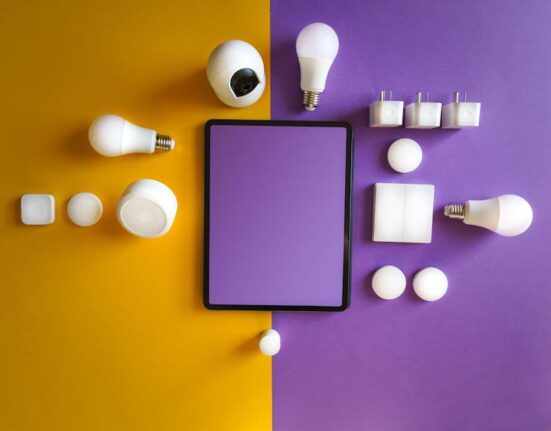Welcome to the future of home automation, where convenience meets intuitive design. In 2025, smart home technology has not only evolved in functionality but has also transformed how we interact with our living spaces. As homeowners increasingly seek seamless integration of their devices, the importance of user-friendly app interfaces has come to the forefront. This article delves into the most innovative and accessible smart home app interfaces of 2025, showcasing how design and usability are revolutionizing the way we manage our homes. From effortlessly adjusting lighting moods to monitoring security systems with a single tap, these apps are setting new standards for user experience, making smart living not just an aspiration but a delightful reality. Join us as we explore the cutting-edge designs that are simplifying our lives, one smart feature at a time.
Exploring Intuitive Navigation Features in Smart Home Apps
As smart home technology continues to evolve, the emphasis on intuitive navigation within app interfaces has become paramount. Users now expect seamless integration and effortless control over their home devices, making it essential for app developers to prioritize user experience. Features such as voice commands, gesture controls, and personalized dashboards are revolutionizing the way users interact with their environments. The best apps of 2025 have harnessed these elements to create interfaces that not only look appealing but also foster a sense of familiarity, allowing users to control their smart devices without a steep learning curve.
Moreover, implementing adaptive learning systems is enhancing user engagement by anticipating user preferences and behaviors. Adaptations like context-aware suggestions, which automatically adjust based on time of day or patterns in device usage, have emerged as a key feature. A user-friendly experience is further complemented by design elements that simplify navigation, including tabbed layouts, color-coded device categories, and quick access buttons. These changes have led to adjustments in how users perceive control over their smart home devices, fostering a feeling of empowerment and fluidity in everyday tasks.

Personalization Tools Enhancing User Experience in 2025
As we move deeper into 2025, the integration of personalization tools in smart home applications has become essential for providing users with a customized experience. These tools analyze user behavior and preferences to create tailored settings and features that enhance daily routines. For instance, a smart home app might learn when you prefer your thermostat to be warmer or cooler, automatically adjusting the temperature to suit your comfort level. This proactive approach allows users to enjoy seamless interactions with their devices, ensuring that technology serves their unique lifestyle.
Key features of modern personalization in smart home apps include:
- Adaptive Interfaces: Interfaces that evolve based on user interactions, providing shortcuts to frequently accessed functions.
- Behavioral Insights: Analytics that inform users about their habits, enabling them to make informed adjustments.
- Customizable Automations: The ability to set personalized rules, such as lights dimming automatically when a movie starts.
- Voice Recognition: Tailored voice commands that understand context and user preferences for a more efficient experience.
| Feature Type | Benefits |
|---|---|
| Smart Recommendations | Offers suggestions based on past behavior, saving time and improving usability. |
| User Profiles | Separate settings for each family member, enhancing comfort and control. |
| Integration with Other Apps | Seamlessly connects with health, scheduling, and entertainment apps for a unified experience. |

Integrating Voice Control for Seamless Interaction
Voice control has become a cornerstone of intuitive interaction in smart home ecosystems. By leveraging natural language processing and advanced AI, users can now command their devices effortlessly. The integration of voice commands not only allows for hands-free operation, but also fosters a more accessible environment for all users, including those with mobility challenges. With the latest smart home app interfaces, voice control has evolved to include:
- Personalized Commands: Users can create custom voice commands tailored to their routines.
- Multi-Device Coordination: Seamlessly control interconnected devices with a single voice prompt.
- Contextual Awareness: Smart systems can understand and respond based on context and previous interactions.
Furthermore, the visual feedback received from the app enhances user experience by confirming commands and offering suggestions. The combination of voice interaction with strategic app design allows for a fluid navigation experience, breaking down the barriers that often accompany technology adoption. A summary of the features influencing this integration can be seen in the table below:
| Feature | Description |
|---|---|
| Voice Recognition | AI-driven technology that accurately interprets user commands. |
| Feedback Mechanisms | Visual and auditory confirmation of commands for user assurance. |
| Integration with Routines | Linking voice commands with scheduled actions for convenience. |

The Role of Aesthetics in User Engagement and Satisfaction
The importance of aesthetics in user engagement cannot be overstated. In the fast-evolving world of smart home technology, a visually appealing interface is crucial for fostering user satisfaction. An engaging aesthetic not only draws users in but can also significantly enhance their overall experience. Research shows that users tend to remember visually pleasing interfaces more and are more likely to return to apps that resonate aesthetically. In addition to colors, typography, and layout, intuitive design elements such as icons and visual feedback play a vital role in creating a satisfying user experience. Key aesthetic factors influencing user engagement include:
- Color Schemes: Harmonious palettes that evoke the desired emotional response.
- Typography: Clear, legible fonts that guide users effortlessly through the app.
- Visual Hierarchy: Structured layouts that prioritize essential functions and information.
- Animation: Subtle movements that provide context and feedback during interactions.
A well-thought-out aesthetic design leads users to feel comfortable and confident in their interactions, reducing frustration and cognitive load. When users trust the visual elements of an interface, they’re more likely to explore functionalities, leading to higher levels of engagement and repeat use. Modern smart home app interfaces leverage this principle through a blend of simplicity and innovation. Below is a summary table highlighting user-friendly features that contribute to aesthetic appeal:
| App Name | Aesthetic Features | User Engagement Rating |
|---|---|---|
| SmartHomeConnect | Vibrant color schemes & Intuitive icons | 9/10 |
| HomeEase | Minimalist design & Clear typography | 8.5/10 |
| EcoSmart | Soft pastels & Organic shapes | 9.5/10 |
Future Outlook
As we navigate through the ever-evolving landscape of smart home technology, the significance of user-friendly app interfaces becomes increasingly apparent. In 2025, the most successful smart home applications are those that prioritize simplicity and intuitive design, allowing users to effortlessly control their environments. The innovations we’ve explored not only enhance convenience but also empower users, transforming how we interact with our homes. As these platforms continue to evolve, one thing remains clear: ease of use is paramount. With a focus on accessibility, manufacturers are setting new standards that will shape the future of our daily interactions with technology. As we look ahead, staying informed about these advancements will ensure that we are not just passive users, but active participants in creating smarter, more integrated living spaces. Embracing the user-friendly revolution in smart home applications ultimately leads us toward a future where technology feels less like a taskmaster and more like a trusted companion in our daily lives.














Leave feedback about this